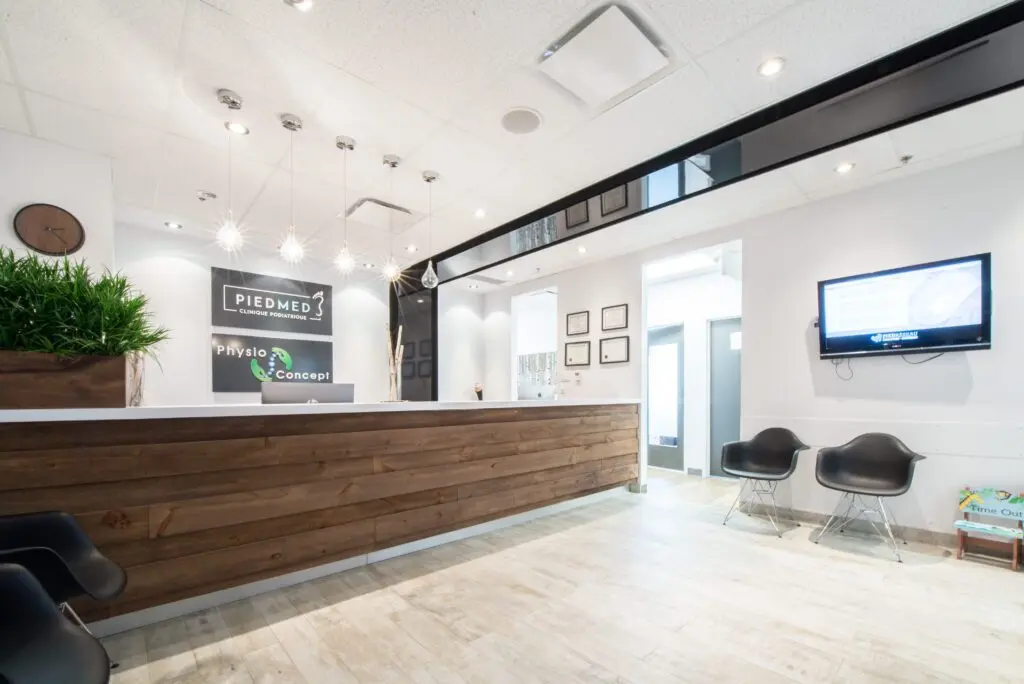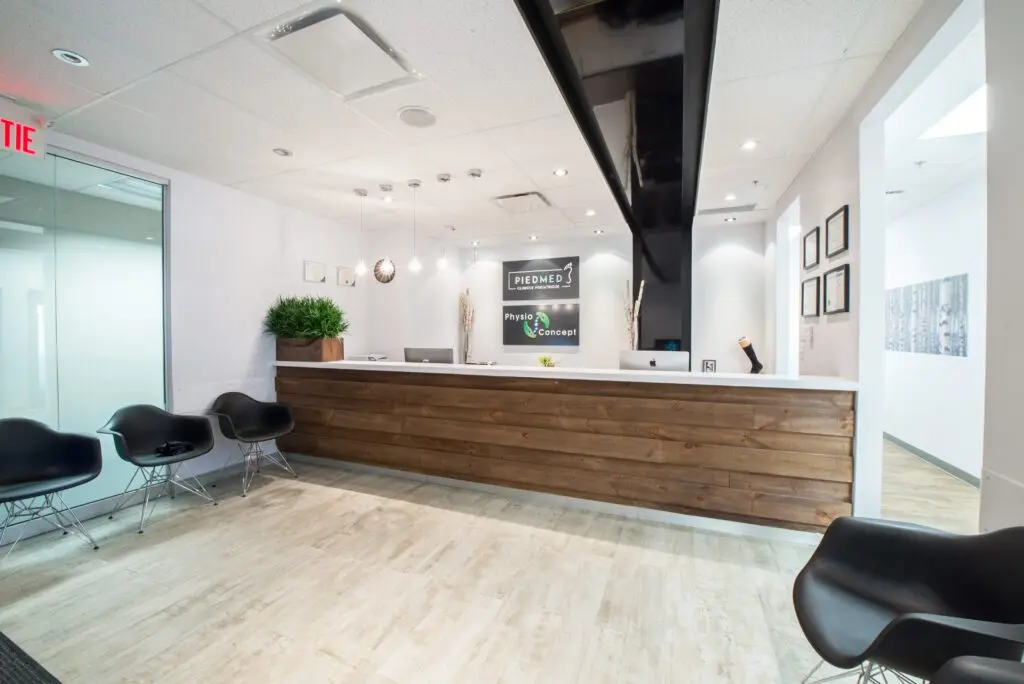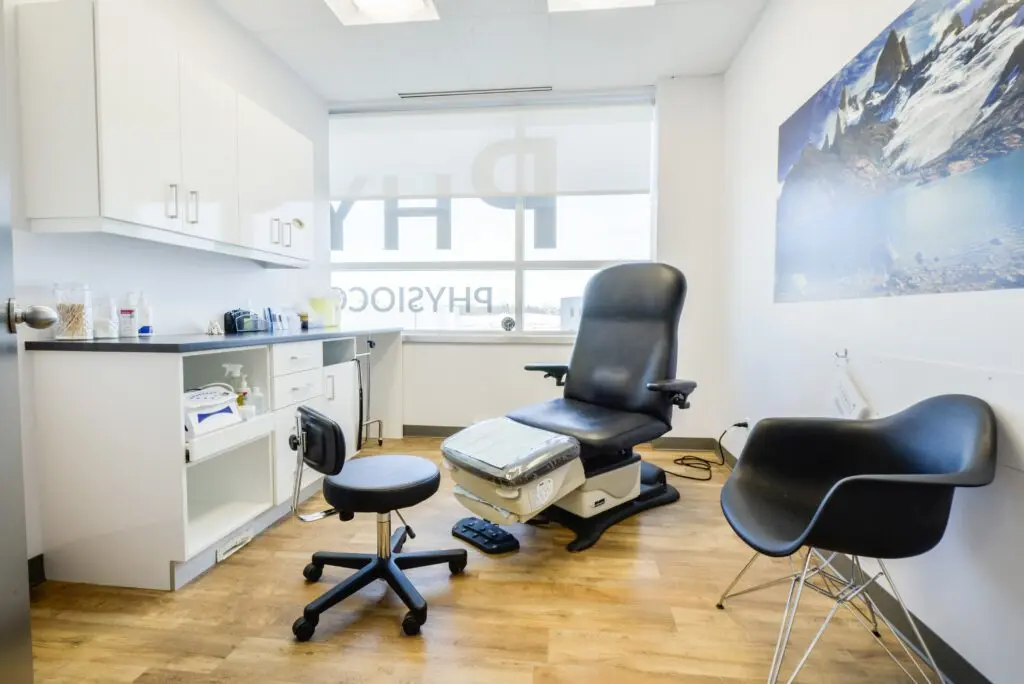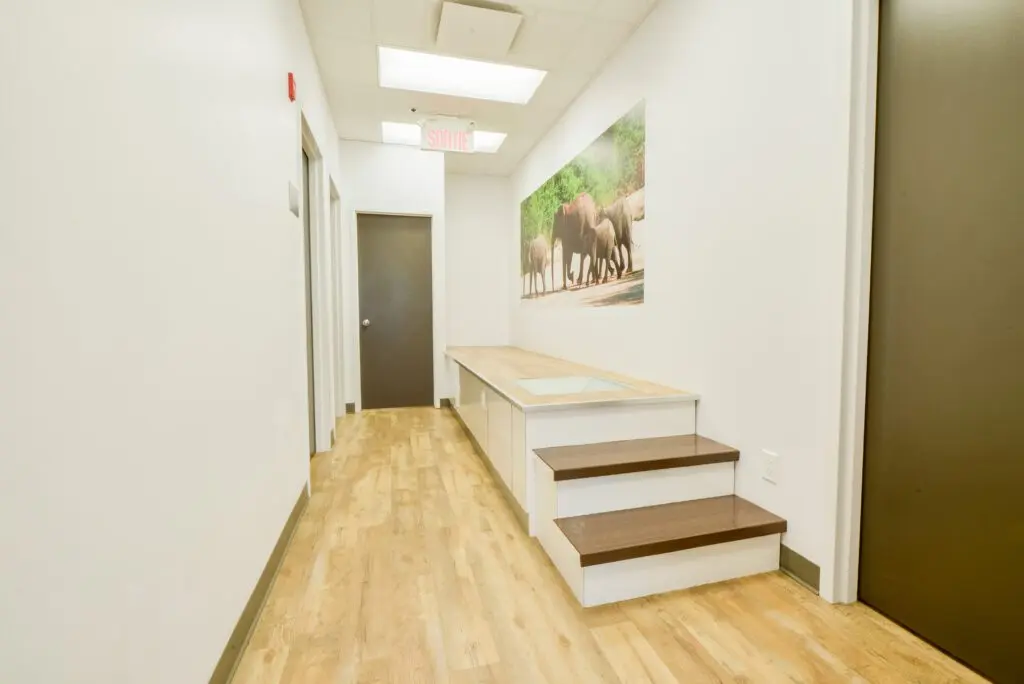
Both Dr. Marilou Arsenault and Dr. Myriam Dion, podiatrists from the Clinique podiatrique PiedMed take pride in making themselves available to their patients. That’s why the two graduates of the Université du Québec à Trois-Rivières’ doctor of podiatry program offer an extended schedule for their clients, who can then benefit more from the expertise offered by each team member.
What’s more, they do everything they can to ensure the family atmosphere of their clinic serves to calm their patients, just as if they were in the comfort of their own homes.
PiedRéseau Boisbriand
20845 Chemin de la Côte-Nord,
office 303, Boisbriand, QC J7E 4H5
directions
1-450 987-6917 Toll free
Monday
10:00 - 20:00
Tuesday
08:45 - 20:00
Wednesday
09:00 - 18:00
Thursday
07:00 - 16:00
Friday
08:30 - 14:00
PiedMed: Boisbriand’s multidisciplinary clinic
Since 2013 the owners of Clinique podiatrique PiedMed de Boisbriand PiedMed’s podiatric clinic in Boisbriand, Drs. Marilou Arsenault and Myriam Dion have been welcoming you in a warm and dynamic environment.





Frequent problems
- Achilles tendinitis : symptoms and treatments
- Ankle (malleolus) fracture
- Athlete’s foot (tinea pedis)
- Big toe fracture : symptoms and treatments
- Big toe osteoarthritis (Hallux rigidus)
- Cavus foot : symptoms and treatments
- Clubfoot : symptoms and treatments
- Corns, calluses and severe corns
- Cuboid bone subluxation
- Diabetic foot : symptoms and treatments
- Diabetic foot ulcer : symptoms and treatments
- Flatfoot : symptoms and treatments
- Foot arthritis : symptoms and treatments
- Foot blisters : symptoms and treatments
- Foot bunion (hallux valgus)
- Foot capsulitis : symptoms and treatments
- Foot deformities : symptoms and treatments
- Functional hallux limitus
- Hammer toe : symptoms and treatments
- Heel (calcaneus) fracture
- Heel bursitis : symptoms and treatments
- Heel cracks : symptoms and treatments
- Heel panniculitis : symptoms and treatments
- Heel spur (Lenoir’s thorn)
- Hematoma under the toenail
- Ingrown toenail (onychocryptosis)
- Joint wear and tear : symptoms and treatments
- Knock-knees (genu valgum)
- Lower back pain (lumbago)
- Metatarsalgia : symptoms and treatments
- Morton’s neuroma : symptoms and treatments
- Muscle Cramps : symptoms and treatments
- Nail fungus (Onychomycosis)
- Pain : foot, ankle, leg, knee, hip and lower back
- Patellofemoral syndrome
- Plantar fasciitis: causes, symptoms and treatments
- Plantar fibromatosis
- Plantar fissures : symptoms and treatments
- Plantar warts: causes, symptoms and treatment
- Sesamoiditis : symptoms and treatments
- Tarsal tunnel syndrome
- The bunionette (quintus varus)
- Toenail paronychia : symptoms and treatments
- Toenail trauma : symptoms and treatments
Treatments provided
- 2D and 3D digital imaging
- A podiatrist’s treatment for plantar warts
- Biomechanical exam : symptoms and treatments
- Cortisone injections
- Evaluating Children’s Feet
- Foot care – Nails, corns and calluses treatment
- Foot ultrasound imaging
- Ingrown toenail treatment by a podiatrist
- Molecular analysis for diagnosing onychomycosis
- Nail culture : importance, advantages and procedure
- Orthopaedic shoes : types and benefits
- Plantar orthotics: types, benefits, and adaptation tips
- Podopediatrics treatments
- Postural evaluation
- ShockWave therapy : therapeutic benefits and treatment
- Therapeutic foot taping
- Therapeutic laser treatment
- Toenail deformity : treatments
- Treating frostbite on the feet and toes
- Treatment of foot pain by the podiatrist
- Treatments for paronychia of the toe
- Ultrasound guided injection
- Ultrasound treatment
- Stress fracture in the foot
- Treatment for excessive foot sweating
- Partial or complete foot amputation
Responsible for personal information/confidentiality: Myriam Dion et Marilou Arsenault 450-990-0042
Request an appointment at the clinic
Leave us your contact details and availability and we will contact you to make an appointment.
Please note that if you are seeking podiatry services following a work-related accident (CNESST) or a road accident (SAAQ), please contact us before your appointment to obtain more information about the reimbursement procedures.






